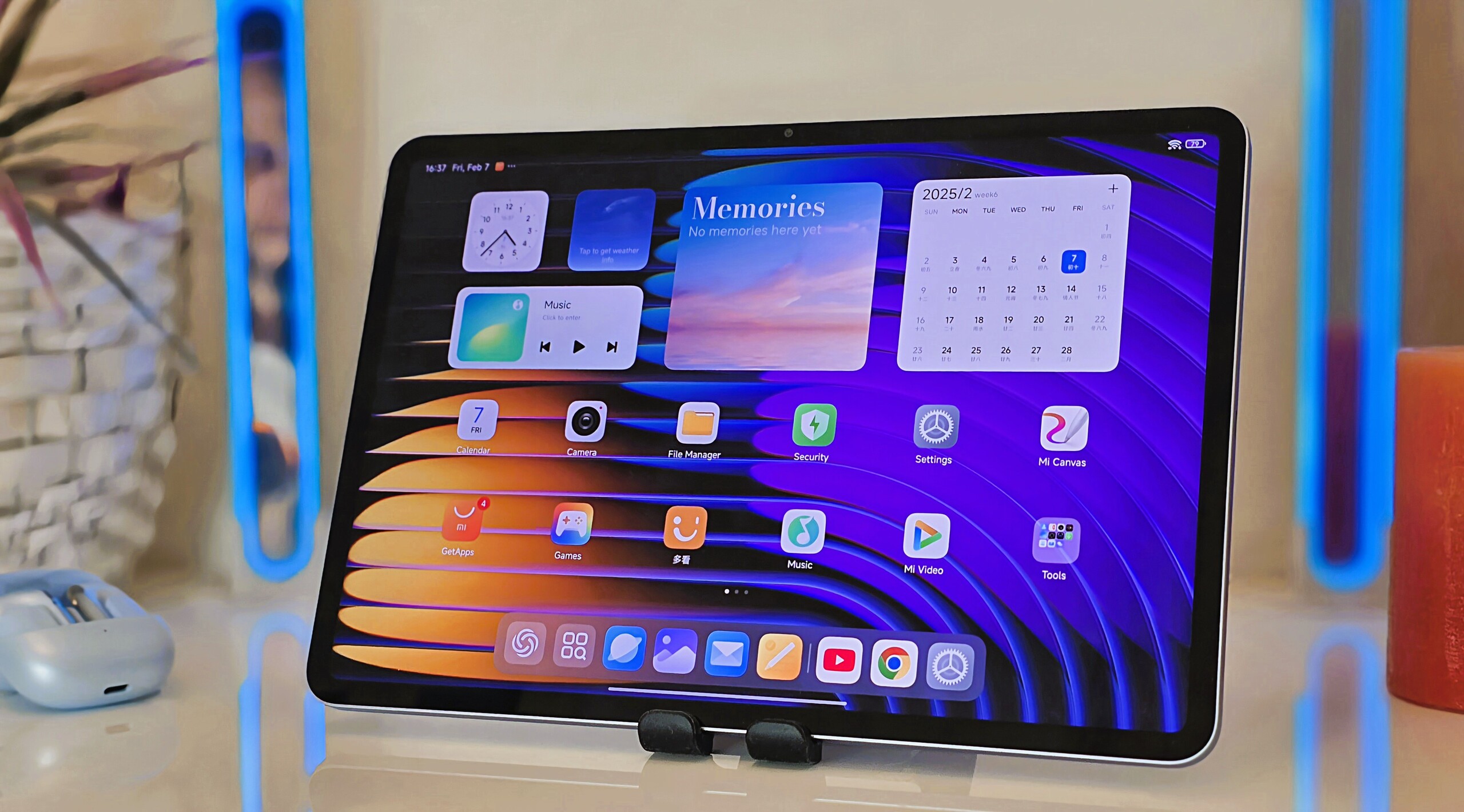
小米 Pad 7 Pro 评测--具有超强持久力和超大屏幕的经济型平板电脑
Apple iPad Air 的廉价替代品。
在许多方面,小米 Pad 7 Pro 都优于 iPad Air 2024,但价格却不到后者的一半。尤其是小米平板电脑的 3K 显示屏,在这个价位上是无与伦比的。不过,与小米 Pad 7 相比,Pro 版可能有一个缺陷。Marcus Herbrich, 👁 Daniel Schmidt (translated by DeepL / Ninh Duy) Published 🇺🇸 🇩🇪 ...
小米 Pad 7 Pro 评测
在我们的评测中,小米 Pad 7 Pro 的性能、功能和价格比给我们留下了非常深刻的印象。它配备了功能强大的高通处理器、无 PWM 高分辨率显示屏和出色的扬声器系统,可确保用户享受到绝佳的音质。因此,它是一款非常适合多媒体应用的中端平板电脑。由于电池续航能力极强,加上支持手写笔和可选配的键盘保护套,没有什么能阻挡你高效完成工作。
不过,小米平板电脑也留下了一些问号,尤其是在更新政策和全球可用性方面。因此,希望获得长期软件支持的用户应该选择Galaxy Tab S9 或三星Galaxy Tab S9 FE。此外,由于缺乏 GNSS 和 5G 选项以及 6 GHz Wi-Fi,Pad 7 Pro 在连接性方面受到一定限制。
Pros
Cons
价格和供应情况
小米 Pad 7 Pro 目前仅在德国以进口方式销售。在中国,这款中档平板电脑的基本版售价为 2499 元(约合 330 美元)。在我们的合作伙伴深圳贸易公司,起价约为 440 美元。目前还没有进一步的全球上市迹象,因此 Pro 版(与 Pad 6 系列类似)可能不会进入欧洲市场。
可能的替代品比较
Image | Model / Review | Price | Weight | Drive | Display |
|---|---|---|---|---|---|
| Xiaomi Pad 7 Pro Qualcomm Snapdragon 8s Gen 3 ⎘ Qualcomm Adreno 735 ⎘ 12 GB Memory, 256 GB | Amazon: 1. $519.99 Xiaomi Pad 7 Ai WiFi Version... 2. $299.00 Xiaomi Redmi Pad Pro WiFi Ve... 3. $9.95 Gylint Case for Xiaomi Pad 7... List Price: 450€ | 500 g | 256 GB UFS 4.0 Flash | 11.20" 3200x2136 344 PPI IPS | |
| OnePlus Pad 2 Qualcomm Snapdragon 8 Gen 3 ⎘ Qualcomm Adreno 750 ⎘ 12 GB Memory, 256 GB | Amazon: $549.99 List Price: 549€ | 584 g | 256 GB UFS 3.1 Flash | 12.10" 3000x2120 304 PPI IPS | |
| Apple iPad Air 11 2024 Apple M2 ⎘ Apple M2 10-Core GPU ⎘ 8 GB Memory, 128 GB NVMe | Amazon: $799.00 List Price: 699€ | 462 g | 128 GB NVMe | 10.86" 2360x1640 265 PPI IPS | |
| Huawei MatePad 11.5 S HiSilicon Kirin 9000W ⎘ HiSilicon Maleoon 910 ⎘ 8 GB Memory, 256 GB | Amazon: 1. $40.99 YOUULAR Shoulder Strap Table... 2. $10.95 Mr.Shield Screen Protector c... 3. $27.88 Compatible for Huawei MatePa... List Price: 399€ | 510 g | 256 GB UFS 3.1 Flash | 11.50" 2800x1840 291 PPI TFT-LCD | |
| Samsung Galaxy Tab S9 5G Qualcomm Snapdragon 8 Gen 2 for Galaxy ⎘ Qualcomm Adreno 740 ⎘ 12 GB Memory, 256 GB | Amazon: List Price: 1169€ | 500 g | 256 GB UFS 4.0 Flash | 11.00" 2560x1600 274 PPI Dynamic AMOLED 2x |
与 小米 15和 小米 15 Pro作为其中国发布会的一部分,中国制造商还展示了小米 Pad 7 Pro。这款中端平板电脑配置了 11.2 英寸显示屏和骁龙 8s Gen 3 处理器。 骁龙 8s Gen 3.由于价格低廉,制造商在可选配件方面也毫不妥协。带照明按键的键盘盖和触控笔也可将 Pad 7 Pro 变为学校或大学的工作机器。
小米 Pad 7 Pro 规格
» Notebookcheck多媒体笔记本电脑Top 10排名
» Notebookcheck游戏笔记本电脑Top 10排名
» Notebookcheck低价办公/商务笔记本电脑Top 10排名
» Notebookcheck高端办公/商务笔记本电脑Top 10排名
» Notebookcheck工作站笔记本电脑Top 10排名
» Notebookcheck亚笔记本电脑Top 10排名
» Notebookcheck超级本产品Top 10排名
» Notebookcheck变形本产品Top 10排名
» Notebookcheck平板电脑Top 10排名
» Notebookcheck智能手机Top 10排名
» Notebookcheck评测过最出色的笔记本电脑屏幕
» Notebookcheck售价500欧元以下笔记本电脑Top 10排名
» Notebookcheck售价300欧元以下笔记本电脑Top 10排名
外壳 - 小米平板电脑采用金属外壳
功能 - Pad 7 Pro 采用 USB 3.2 接口。
小米平板电脑配备 8 或 12 GB LDDR5X 内存和 256 或 512 GB UFS 4.0 存储空间。此外,Pad 7 Pro 的四扬声器系统、手写笔支持、Miracast 和指纹传感器为中端平板电脑提供了强大的功能。在测试中,我们还通过快速 USB 3.2 端口(1 代)测得三星 980 Pro(M2 固态硬盘)的数据传输速度高达 212 MB/s。连接的存储介质可使用 NTFS 或 exFAT 格式化。借助适配器,USB 端口还可将图像信号输出到外部屏幕。
软件 - 小米平板电脑运行Android 15
可持续性
小米没有提供有关所用材料及其回收率的详细信息,但制造商提供了一般的回收信息。重点是增加回收材料的使用,包括铝、金和铜。使用有机基高分子材料和从废弃渔网中回收的塑料也有助于将生态足迹降至最低。
包装看似不含塑料,但设备本身是用铝箔包裹的。包装的其余部分由纸板制成。
通信和全球导航卫星系统 - 缺乏 GPS 的平板电脑
小米平板电脑既不提供使用移动数据的选项,也不支持通过卫星系统定位。
在家庭网络中,Pad 7 Pro 使用现代 WiFi 7 标准,但只能在 2.4 和 5 GHz 范围内建立连接。在与华硕 ROG Rapture GT-AXE11000 配对的测试中,我们在不使用 6 GHz 频段的情况下实现了近 1,000 Mbit/s 的惊人传输速度。不过,我们无法使用 6E 参考路由器完全利用 WiFi 7。
| Networking | |
| iperf3 transmit AXE11000 | |
| Huawei MatePad 11.5 S | |
| Average Wi-Fi 7 (556 - 1806, n=59) | |
| Xiaomi Pad 7 Pro | |
| Samsung Galaxy Tab S9 5G | |
| Average of class Tablet (10.5 - 1463, n=84, last 2 years) | |
| iperf3 receive AXE11000 | |
| Average Wi-Fi 7 (565 - 1875, n=59) | |
| Samsung Galaxy Tab S9 5G | |
| Xiaomi Pad 7 Pro | |
| Huawei MatePad 11.5 S | |
| Average of class Tablet (20.1 - 1705, n=84, last 2 years) | |
| iperf3 transmit AXE11000 6GHz | |
| Average Wi-Fi 7 (563 - 1945, n=45) | |
| Average of class Tablet (578 - 1888, n=19, last 2 years) | |
| OnePlus Pad 2 | |
| Apple iPad Air 11 2024 | |
| iperf3 receive AXE11000 6GHz | |
| OnePlus Pad 2 | |
| Average Wi-Fi 7 (451 - 1864, n=45) | |
| Average of class Tablet (960 - 1842, n=19, last 2 years) | |
| Apple iPad Air 11 2024 | |
摄像头 - 小米平板电脑只有一个摄像头
在 Pad 7 Pro 的相机系统方面,小米从其姊妹机型 Pad 6S Pro 中汲取了灵感。前置 3200 万像素镜头采用了像素二进制技术,但只能使用固定焦距。对于这个价位的产品来说,照片质量还是可以接受的。使用前置摄像头可以 30fps 的全高清画质录制视频。此外,这款中端平板电脑还能拍摄 4K60 的动态图像。
相机系统的核心是一个自动对焦的 5000 万像素镜头,光圈为 f/1.8。在日光下,三星 JN1 能拍出不错的照片,对于一款售价不到 500 美元的平板电脑来说,照片质量非常出色。不过,色彩还原有时似乎有点过度饱和。Pad 7 Pro 所提供的照片质量非常适合为文件拍照,以便日后添加注释。通过相应的模式,识别到的文档区域也会自动裁剪并保存。
Image Comparison
Choose a scene and navigate within the first image. One click changes the position on touchscreens. One click on the zoomed-in image opens the original in a new window. The first image shows the scaled photograph of the test device.
Wide-angleWide-angleLow-lightZoom 5x

配件和保修 - Pad 7 Pro 随附一个电源适配器
输入设备和操作 - 小米平板电脑和 360 Hz
显示屏 - Pad 7 Pro 采用 LCD
| |||||||||||||||||||||||||
Brightness Distribution: 91 %
Center on Battery: 776 cd/m²
Contrast: 1338:1 (Black: 0.58 cd/m²)
ΔE Color 1.6 | 0.5-29.43 Ø4.87
ΔE Greyscale 2.5 | 0.5-98 Ø5.1
99.3% sRGB (Calman 2D)
Gamma: 2.23
| Xiaomi Pad 7 Pro IPS, 3200x2136, 11.2" | OnePlus Pad 2 IPS, 3000x2120, 12.1" | Apple iPad Air 11 2024 IPS, 2360x1640, 10.9" | Huawei MatePad 11.5 S TFT-LCD, 2800x1840, 11.5" | Samsung Galaxy Tab S9 5G Dynamic AMOLED 2x, 2560x1600, 11" | |
|---|---|---|---|---|---|
| Screen | 5% | -1% | -66% | -15% | |
| Brightness middle | 776 | 833 7% | 506 -35% | 511 -34% | 576 -26% |
| Brightness | 750 | 771 3% | 474 -37% | 449 -40% | 579 -23% |
| Brightness Distribution | 91 | 84 -8% | 87 -4% | 83 -9% | 99 9% |
| Black Level * | 0.58 | 0.45 22% | 0.4 31% | 0.99 -71% | |
| Contrast | 1338 | 1851 38% | 1265 -5% | 516 -61% | |
| Colorchecker dE 2000 * | 1.6 | 1.79 -12% | 1.48 7% | 3.6 -125% | 2.5 -56% |
| Colorchecker dE 2000 max. * | 4.5 | 4.01 11% | 3.12 31% | 7.5 -67% | 4.6 -2% |
| Greyscale dE 2000 * | 2.5 | 3 -20% | 2.3 8% | 5.5 -120% | 2.3 8% |
| Gamma | 2.23 99% | 2.254 98% | 2.204 100% | 2.27 97% | 2.02 109% |
| CCT | 6892 94% | 6419 101% | 6954 93% | 7566 86% | 6585 99% |
* ... smaller is better
Screen Flickering / PWM (Pulse-Width Modulation)
| Screen flickering / PWM not detected | |||
In comparison: 53 % of all tested devices do not use PWM to dim the display. If PWM was detected, an average of 8516 (minimum: 5 - maximum: 343500) Hz was measured. | |||
Display Response Times
| ↔ Response Time Black to White | ||
|---|---|---|
| 18.37 ms ... rise ↗ and fall ↘ combined | ↗ 4.82 ms rise | |
| ↘ 13.55 ms fall | ||
| The screen shows good response rates in our tests, but may be too slow for competitive gamers. In comparison, all tested devices range from 0.1 (minimum) to 240 (maximum) ms. » 38 % of all devices are better. This means that the measured response time is better than the average of all tested devices (20.8 ms). | ||
| ↔ Response Time 50% Grey to 80% Grey | ||
| 36.13 ms ... rise ↗ and fall ↘ combined | ↗ 11.32 ms rise | |
| ↘ 24.81 ms fall | ||
| The screen shows slow response rates in our tests and will be unsatisfactory for gamers. In comparison, all tested devices range from 0.165 (minimum) to 636 (maximum) ms. » 49 % of all devices are better. This means that the measured response time is worse than the average of all tested devices (32.5 ms). | ||
性能 - 小米平板电脑依赖于高通公司
在我们的一系列基准测试中 骁龙 8s 第 3 代与 12GB 内存一起运行,达到了中端平板电脑的高性能水平。与 Galaxy 平板电脑 S9相比,记录的分数要低一些。在图形测试中 Adreno 735也取得了不错的成绩;不过,在要求苛刻的 GFXBench tier 测试中,它的工作就像拉上了手刹。
| UL Procyon AI Inference for Android - Overall Score NNAPI | |
| Samsung Galaxy Tab S9 5G | |
| Xiaomi Pad 7 Pro | |
| Average Qualcomm Snapdragon 8s Gen 3 (13576 - 15572, n=6) | |
| Average of class Tablet (2597 - 74821, n=57, last 2 years) | |
| Huawei MatePad 11.5 S | |
| AImark - Score v3.x | |
| Average of class Tablet (84 - 156427, n=51, last 2 years) | |
| Samsung Galaxy Tab S9 5G | |
| Xiaomi Pad 7 Pro | |
| Average Qualcomm Snapdragon 8s Gen 3 (946 - 1321, n=7) | |
| Huawei MatePad 11.5 S | |
| Geekbench AI | |
| Quantized TensorFlow NNAPI 1.2 | |
| Average of class Tablet (130 - 4532, n=9, last 2 years) | |
| Xiaomi Pad 7 Pro | |
| Average Qualcomm Snapdragon 8s Gen 3 (n=1) | |
| Half Precision TensorFlow NNAPI 1.2 | |
| Average of class Tablet (84 - 4545, n=9, last 2 years) | |
| Xiaomi Pad 7 Pro | |
| Average Qualcomm Snapdragon 8s Gen 3 (n=1) | |
| Single Precision TensorFlow NNAPI 1.2 | |
| Xiaomi Pad 7 Pro | |
| Average Qualcomm Snapdragon 8s Gen 3 (n=1) | |
| Average of class Tablet (85 - 1140, n=9, last 2 years) | |
GFXBench (DX / GLBenchmark) 2.7: T-Rex Onscreen | 1920x1080 T-Rex Offscreen
GFXBench 3.0: on screen Manhattan Onscreen OGL | 1920x1080 1080p Manhattan Offscreen
GFXBench 3.1: on screen Manhattan ES 3.1 Onscreen | 1920x1080 Manhattan ES 3.1 Offscreen
GFXBench: on screen Car Chase Onscreen | 1920x1080 Car Chase Offscreen | on screen Aztec Ruins High Tier Onscreen | 2560x1440 Aztec Ruins High Tier Offscreen | on screen Aztec Ruins Normal Tier Onscreen | 1920x1080 Aztec Ruins Normal Tier Offscreen | 3840x2160 4K Aztec Ruins High Tier Offscreen
| 3DMark / Wild Life Extreme Unlimited | |
| Apple iPad Air 11 2024 | |
| OnePlus Pad 2 | |
| Samsung Galaxy Tab S9 5G | |
| Xiaomi Pad 7 Pro | |
| Huawei MatePad 11.5 S | |
| 3DMark / Wild Life Extreme | |
| Apple iPad Air 11 2024 | |
| OnePlus Pad 2 | |
| Samsung Galaxy Tab S9 5G | |
| Xiaomi Pad 7 Pro | |
| Huawei MatePad 11.5 S | |
| 3DMark / Wild Life Unlimited Score | |
| Apple iPad Air 11 2024 | |
| Samsung Galaxy Tab S9 5G | |
| Xiaomi Pad 7 Pro | |
| Huawei MatePad 11.5 S | |
| 3DMark / Solar Bay Score | |
| OnePlus Pad 2 | |
| Apple iPad Air 11 2024 | |
| Samsung Galaxy Tab S9 5G | |
| Xiaomi Pad 7 Pro | |
| 3DMark / Solar Bay Unlimited Score | |
| OnePlus Pad 2 | |
| Apple iPad Air 11 2024 | |
| Samsung Galaxy Tab S9 5G | |
| Xiaomi Pad 7 Pro | |
| 3DMark / Steel Nomad Light Unlimited Score | |
| OnePlus Pad 2 | |
| Xiaomi Pad 7 Pro | |
| 3DMark / Steel Nomad Light Score | |
| OnePlus Pad 2 | |
| Xiaomi Pad 7 Pro | |
| Huawei MatePad 11.5 S | |
| GFXBench (DX / GLBenchmark) 2.7 / T-Rex Onscreen | |
| Samsung Galaxy Tab S9 5G | |
| Xiaomi Pad 7 Pro | |
| Apple iPad Air 11 2024 | |
| Huawei MatePad 11.5 S | |
| GFXBench (DX / GLBenchmark) 2.7 / T-Rex Offscreen | |
| Apple iPad Air 11 2024 | |
| Xiaomi Pad 7 Pro | |
| Samsung Galaxy Tab S9 5G | |
| Huawei MatePad 11.5 S | |
| GFXBench 3.0 / Manhattan Onscreen OGL | |
| Samsung Galaxy Tab S9 5G | |
| Xiaomi Pad 7 Pro | |
| Apple iPad Air 11 2024 | |
| Huawei MatePad 11.5 S | |
| GFXBench 3.0 / 1080p Manhattan Offscreen | |
| Apple iPad Air 11 2024 | |
| Xiaomi Pad 7 Pro | |
| Samsung Galaxy Tab S9 5G | |
| Huawei MatePad 11.5 S | |
| GFXBench 3.1 / Manhattan ES 3.1 Onscreen | |
| Samsung Galaxy Tab S9 5G | |
| Apple iPad Air 11 2024 | |
| Xiaomi Pad 7 Pro | |
| Huawei MatePad 11.5 S | |
| GFXBench 3.1 / Manhattan ES 3.1 Offscreen | |
| Apple iPad Air 11 2024 | |
| Samsung Galaxy Tab S9 5G | |
| Xiaomi Pad 7 Pro | |
| Huawei MatePad 11.5 S | |
| GFXBench / Car Chase Onscreen | |
| Samsung Galaxy Tab S9 5G | |
| Apple iPad Air 11 2024 | |
| Xiaomi Pad 7 Pro | |
| Huawei MatePad 11.5 S | |
| GFXBench / Car Chase Offscreen | |
| Apple iPad Air 11 2024 | |
| Samsung Galaxy Tab S9 5G | |
| Xiaomi Pad 7 Pro | |
| Huawei MatePad 11.5 S | |
| GFXBench / Aztec Ruins High Tier Onscreen | |
| Samsung Galaxy Tab S9 5G | |
| Apple iPad Air 11 2024 | |
| OnePlus Pad 2 | |
| Xiaomi Pad 7 Pro | |
| Huawei MatePad 11.5 S | |
| GFXBench / Aztec Ruins High Tier Offscreen | |
| Samsung Galaxy Tab S9 5G | |
| OnePlus Pad 2 | |
| Apple iPad Air 11 2024 | |
| Xiaomi Pad 7 Pro | |
| Huawei MatePad 11.5 S | |
| GFXBench / Aztec Ruins Normal Tier Onscreen | |
| Samsung Galaxy Tab S9 5G | |
| Apple iPad Air 11 2024 | |
| OnePlus Pad 2 | |
| Xiaomi Pad 7 Pro | |
| Huawei MatePad 11.5 S | |
| GFXBench / Aztec Ruins Normal Tier Offscreen | |
| Apple iPad Air 11 2024 | |
| OnePlus Pad 2 | |
| Samsung Galaxy Tab S9 5G | |
| Xiaomi Pad 7 Pro | |
| Huawei MatePad 11.5 S | |
| GFXBench / 4K Aztec Ruins High Tier Offscreen | |
| Apple iPad Air 11 2024 | |
| Samsung Galaxy Tab S9 5G | |
| OnePlus Pad 2 | |
| Xiaomi Pad 7 Pro | |
| Huawei MatePad 11.5 S | |
| Jetstream 2 - 2.0 Total Score | |
| Apple iPad Air 11 2024 (Safari 17) | |
| Xiaomi Pad 7 Pro (Chrome 132) | |
| Average Qualcomm Snapdragon 8s Gen 3 (59.7 - 235, n=7) | |
| Samsung Galaxy Tab S9 5G (chrome 117) | |
| Average of class Tablet (19.9 - 334, n=69, last 2 years) | |
| Huawei MatePad 11.5 S (Huawei Browser V14) | |
| Speedometer 3.0 - Score | |
| Apple iPad Air 11 2024 (Safari 17) | |
| Average of class Tablet (1.25 - 34.4, n=37, last 2 years) | |
| Xiaomi Pad 7 Pro (Chrome 132) | |
| Average Qualcomm Snapdragon 8s Gen 3 (3.54 - 13.6, n=7) | |
| Huawei MatePad 11.5 S (Huawei Browser V14) | |
| WebXPRT 4 - Overall | |
| Apple iPad Air 11 2024 | |
| Samsung Galaxy Tab S9 5G (chrome 117) | |
| Xiaomi Pad 7 Pro (Chrome 132) | |
| Average Qualcomm Snapdragon 8s Gen 3 (61 - 185, n=7) | |
| Average of class Tablet (21 - 315, n=67, last 2 years) | |
| Huawei MatePad 11.5 S (Huawei Browser V14) | |
| Octane V2 - Total Score | |
| Apple iPad Air 11 2024 (Safari 17) | |
| Xiaomi Pad 7 Pro (Chrome 132) | |
| Samsung Galaxy Tab S9 5G (Edge 117) | |
| Average Qualcomm Snapdragon 8s Gen 3 (28536 - 66369, n=7) | |
| OnePlus Pad 2 (Chrome 128) | |
| Average of class Tablet (763 - 105178, n=90, last 2 years) | |
| Huawei MatePad 11.5 S (Huawei Browser V14) | |
| Mozilla Kraken 1.1 - Total | |
| Average of class Tablet (319 - 34733, n=76, last 2 years) | |
| Samsung Galaxy Tab S9 5G (chrome 117) | |
| Huawei MatePad 11.5 S (Huawei Browser V14) | |
| Average Qualcomm Snapdragon 8s Gen 3 (603 - 1456, n=7) | |
| Xiaomi Pad 7 Pro (Chrome 132) | |
| Apple iPad Air 11 2024 (Safari 17) | |
* ... smaller is better
| Xiaomi Pad 7 Pro | OnePlus Pad 2 | Huawei MatePad 11.5 S | Samsung Galaxy Tab S9 5G | Average 256 GB UFS 4.0 Flash | Average of class Tablet | |
|---|---|---|---|---|---|---|
| AndroBench 3-5 | -29% | -16% | -13% | 6% | -55% | |
| Sequential Read 256KB | 3849.52 | 2003.1 -48% | 1837.4 -52% | 3355.97 -13% | 3674 ? -5% | 1193 ? -69% |
| Sequential Write 256KB | 3283.91 | 1732.7 -47% | 1134.93 -65% | 2188.2 -33% | 2674 ? -19% | 834 ? -75% |
| Random Read 4KB | 302.34 | 236.5 -22% | 334.71 11% | 451.18 49% | 387 ? 28% | 200 ? -34% |
| Random Write 4KB | 346.85 | 348.6 1% | 498.29 44% | 160.96 -54% | 408 ? 18% | 203 ? -41% |
排放量
温度
机箱的温度其实并不高,但测得的表面温度却不均匀,Pad 7 Pro 在一个热点区域的温度超过了 42 度。我们使用 3DMark 来检查机箱内部的散热情况。Wild Life 压力测试以 90% 以上的高一致性结束。
(±) The maximum temperature on the upper side is 42.6 °C / 109 F, compared to the average of 33.7 °C / 93 F, ranging from 20.7 to 53.2 °C for the class Tablet.
(±) The bottom heats up to a maximum of 40.7 °C / 105 F, compared to the average of 33.2 °C / 92 F
(+) In idle usage, the average temperature for the upper side is 28.6 °C / 83 F, compared to the device average of 30 °C / 86 F.
3DMark Steel Nomad Stress Test
| 3DMark | |
| Wild Life Stress Test Stability | |
| Apple iPad Air 11 2024 | |
| Huawei MatePad 11.5 S | |
| Xiaomi Pad 7 Pro | |
| OnePlus Pad 2 | |
| Samsung Galaxy Tab S9 5G | |
| Wild Life Extreme Stress Test | |
| Huawei MatePad 11.5 S | |
| Xiaomi Pad 7 Pro | |
| Samsung Galaxy Tab S9 5G | |
| OnePlus Pad 2 | |
| Apple iPad Air 11 2024 | |
| Solar Bay Stress Test Stability | |
| Xiaomi Pad 7 Pro | |
| Apple iPad Air 11 2024 | |
| OnePlus Pad 2 | |
| Samsung Galaxy Tab S9 5G | |
| Steel Nomad Light Stress Test Stability | |
| Xiaomi Pad 7 Pro | |
| OnePlus Pad 2 | |
发言人
Pad 7 Pro 有四个扬声器,并支持杜比全景声(Dolby Atmos)。就这个价位而言,音质非常不错,有很强的层次感和低音。粉红噪声的中音具有线性频率响应,而高音则稍有衰减。如果您希望实现外部声音输出,可以使用带线缆的 USB 端口,或通过蓝牙 5.4 无线连接。
Xiaomi Pad 7 Pro audio analysis
(+) | speakers can play relatively loud (89.5 dB)
Bass 100 - 315 Hz
(-) | nearly no bass - on average 17.7% lower than median
(±) | linearity of bass is average (7.4% delta to prev. frequency)
Mids 400 - 2000 Hz
(+) | balanced mids - only 4.8% away from median
(+) | mids are linear (4.4% delta to prev. frequency)
Highs 2 - 16 kHz
(+) | balanced highs - only 2.1% away from median
(+) | highs are linear (3.4% delta to prev. frequency)
Overall 100 - 16.000 Hz
(+) | overall sound is linear (12.7% difference to median)
Compared to same class
» 18% of all tested devices in this class were better, 5% similar, 77% worse
» The best had a delta of 7%, average was 21%, worst was 129%
Compared to all devices tested
» 10% of all tested devices were better, 3% similar, 87% worse
» The best had a delta of 4%, average was 24%, worst was 134%
Apple iPad Air 11 2024 audio analysis
(±) | speaker loudness is average but good (72.4 dB)
Bass 100 - 315 Hz
(±) | reduced bass - on average 8.6% lower than median
(±) | linearity of bass is average (13% delta to prev. frequency)
Mids 400 - 2000 Hz
(±) | higher mids - on average 5% higher than median
(±) | linearity of mids is average (9.6% delta to prev. frequency)
Highs 2 - 16 kHz
(+) | balanced highs - only 2.9% away from median
(±) | linearity of highs is average (7.6% delta to prev. frequency)
Overall 100 - 16.000 Hz
(+) | overall sound is linear (14.3% difference to median)
Compared to same class
» 26% of all tested devices in this class were better, 4% similar, 70% worse
» The best had a delta of 7%, average was 21%, worst was 129%
Compared to all devices tested
» 16% of all tested devices were better, 4% similar, 80% worse
» The best had a delta of 4%, average was 24%, worst was 134%
电池运行时间 - 小米平板电脑充电迅速
小米平板电脑拥有 8850 毫安时电池,可以高达 67 瓦的速度快速充电。使用附带的电源适配器,80 分钟后电池即可再次充满电。Pad 7 Pro 的耗电量相当高效,尤其是与 MatePad 11.5 S.
耗电量
| Off / Standby | |
| Idle | |
| Load |
|
Key:
min: | |
| Xiaomi Pad 7 Pro 8850 mAh | Apple iPad Air 11 2024 mAh | Huawei MatePad 11.5 S 8800 mAh | Samsung Galaxy Tab S9 5G 8400 mAh | Average Qualcomm Snapdragon 8s Gen 3 | Average of class Tablet | |
|---|---|---|---|---|---|---|
| Power Consumption | -100% | -124% | -92% | -28% | -89% | |
| Idle Minimum * | 0.75 | 1.5 -100% | 1.53 -104% | 2.58 -244% | 1.267 ? -69% | 1.724 ? -130% |
| Idle Average * | 1.5 | 3.6 -140% | 5.96 -297% | 3.24 -116% | 2.17 ? -45% | 3.75 ? -150% |
| Idle Maximum * | 1.56 | 4.6 -195% | 6.07 -289% | 3.39 -117% | 2.3 ? -47% | 4.24 ? -172% |
| Load Average * | 7.92 | 12.8 -62% | 6.87 13% | 7.02 11% | 8.41 ? -6% | 9.15 ? -16% |
| Load Maximum * | 16.5 | 16.8 -2% | 6.88 58% | 15.86 4% | 11.9 ? 28% | 12.9 ? 22% |
* ... smaller is better
Power consumption: Geekbench (150 cd/m²)
Power consumption: GFXbench (150 cd/m²)
电池寿命
在我们使用 150 cd/m² 的适应显示亮度进行的日常 Wi-Fi 测试中,17.5 小时的运行时间对于一款 11 英寸平板电脑来说非常不错。
| Battery Runtime - WiFi v1.3 | |
| Xiaomi Pad 7 Pro | |
| OnePlus Pad 2 | |
| Apple iPad Air 11 2024 | |
| Huawei MatePad 11.5 S | |
| Samsung Galaxy Tab S9 5G | |
Notebookcheck 总体评分
购买小米 Pad 7 Pro 的理由有很多,但必须考虑到进口限制。
Xiaomi Pad 7 Pro
- 02/07/2025 v8
Marcus Herbrich
Transparency
The selection of devices to be reviewed is made by our editorial team. The test sample was provided to the author as a loan by the manufacturer or retailer for the purpose of this review. The lender had no influence on this review, nor did the manufacturer receive a copy of this review before publication. There was no obligation to publish this review. We never accept compensation or payment in return for our reviews. As an independent media company, Notebookcheck is not subjected to the authority of manufacturers, retailers or publishers.
This is how Notebookcheck is testing
Every year, Notebookcheck independently reviews hundreds of laptops and smartphones using standardized procedures to ensure that all results are comparable. We have continuously developed our test methods for around 20 years and set industry standards in the process. In our test labs, high-quality measuring equipment is utilized by experienced technicians and editors. These tests involve a multi-stage validation process. Our complex rating system is based on hundreds of well-founded measurements and benchmarks, which maintains objectivity. Further information on our test methods can be found here.









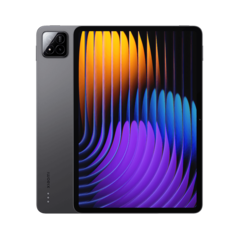
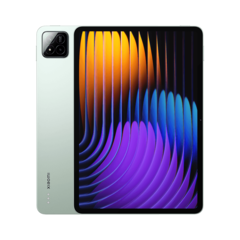
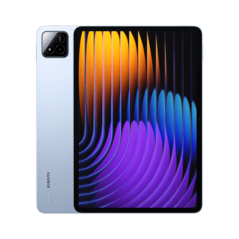
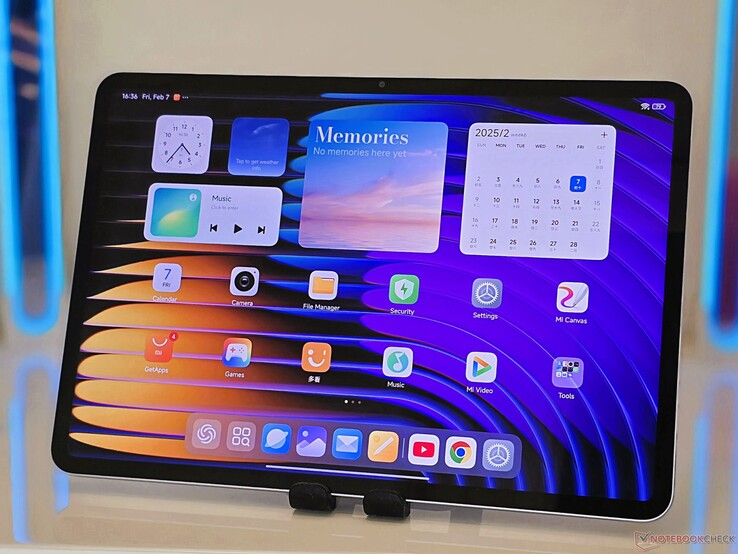



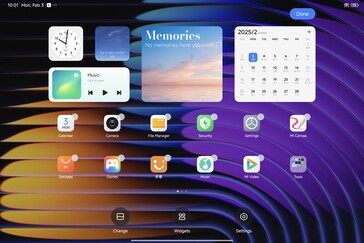
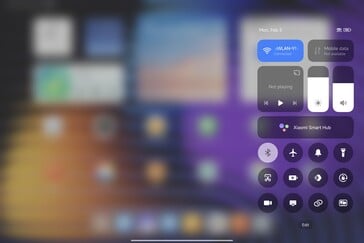
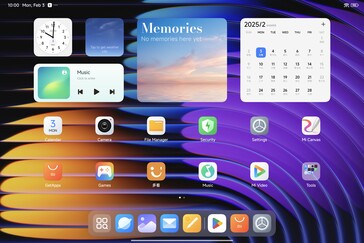
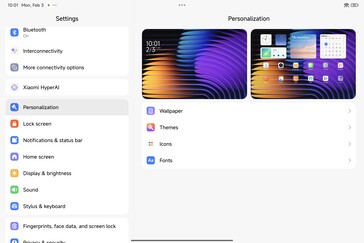






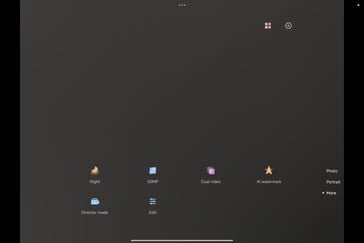
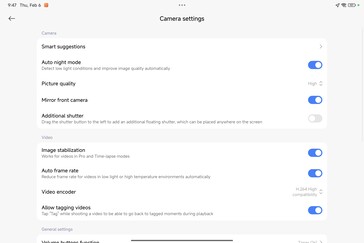
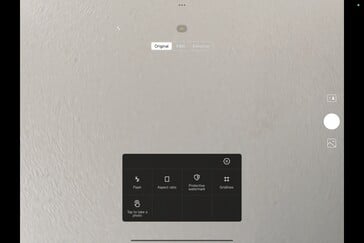
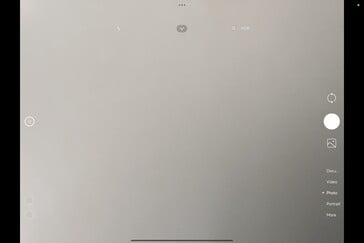





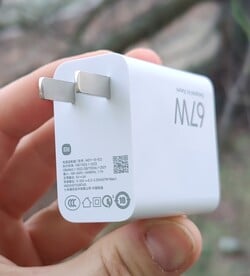
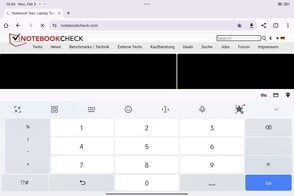
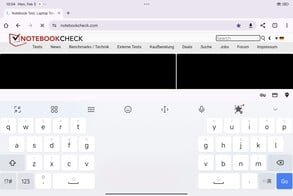
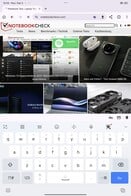
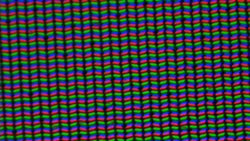
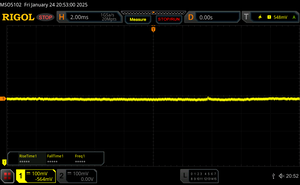


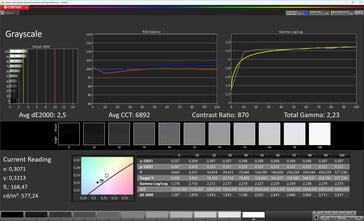
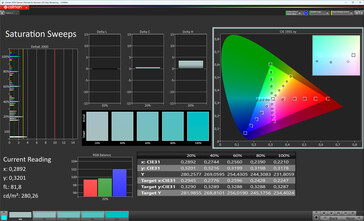
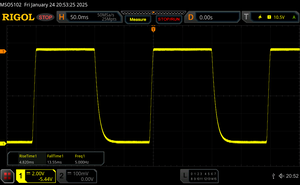
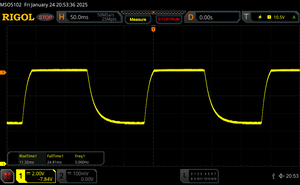
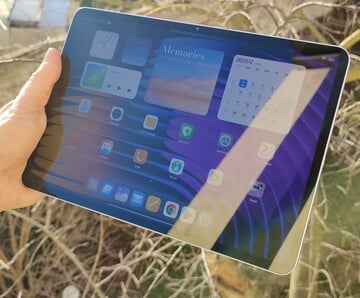
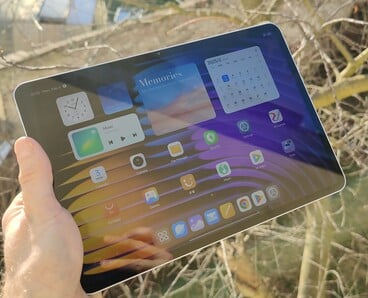
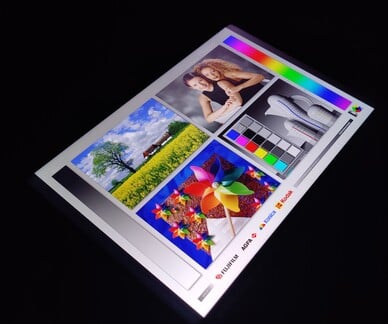
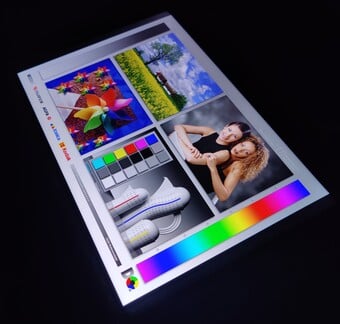
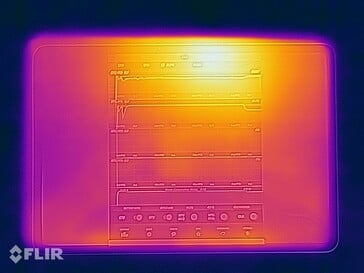
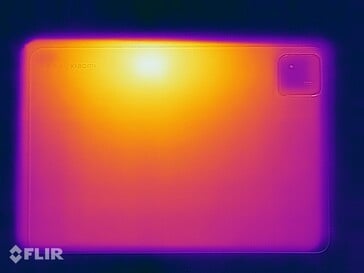
 Total Sustainability Score:
Total Sustainability Score: 








